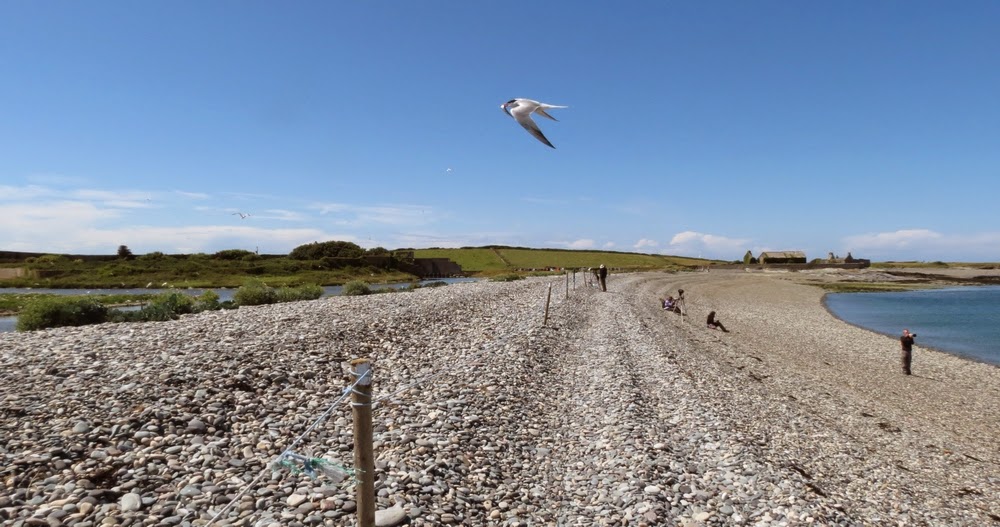 |
| Manx shearwater -RSPB images |
Ramsey Island is home to a
wealth of wildlife. Please help us safeguard this spectacular island reserve by
donating and becoming a Friend of Ramsey.
Bought by the RSPB
in 1992, Ramsey Island is a truly spectacular island reserve, lying just one
mile off the north Pembrokeshire coast. The island is home to a healthy
breeding chough population, important seabird colonies and one of the largest
grey seal breeding populations in southern Britain.
This
dramatic offshore island has cliffs up to 120 m high, the perfect place for breeding
seabirds in spring and early summer. Walk along the coastal heathland and enjoy
the spectacular views.
The island is awash with colour from May to September, with bluebells, then pink thrift and purple heather. You might see choughs and peregrines nesting on the cliffs. And if you visit in the autumn, you can watch a colony of breeding grey seals. There is a small shop on the island and refreshments are available.
The island is awash with colour from May to September, with bluebells, then pink thrift and purple heather. You might see choughs and peregrines nesting on the cliffs. And if you visit in the autumn, you can watch a colony of breeding grey seals. There is a small shop on the island and refreshments are available.
Ramsey island warden, Lisa Morgan,
explains how nest boxes used in New Zealand are helping us learn more about the
migration journeys of Manx shearwaters.
For
the last four years, we’ve been studying the annual migration of Manx
shearwaters as they depart from Ramsey Island and travel to South America. As
part of this work, we now have the opportunity to spy on the daily lives of the
island’s birds in fine detail.
To keep track of the
birds, small GPS devices can be fitted to shearwaters whilst in their nesting
burrows and then removed several days later. However because on Ramsey most
shearwater burrows were originally dug by rabbits and then taken over by the
birds, the tunnels are just too long!
Then inspiration
struck us. We remembered a project we had visited in New Zealand where another
shearwater species, Hutton’s shearwater, was being studied in artificial
burrows.
These custom made
shearwater residences comprise of a piece of drainage pipe, acting as the
entrance tunnel, leading into a wooden nestbox with an all important lid,
allowing us easy access to attach the trackers and monitor the birds.
Once
dug into the ground, the boxes are watertight and desirable property for any
house-hunting shearwater. We hope to establish a colony of 20 nestbox-living
shearwaters on Ramsey, which we can use in our tracking studies in the future.
 |
| Anglesey chough - L Bimson |
A special chough
It's
been a good year for choughs with nine breeding pairs recorded. One very
special chough is a colour-ringed male, hatched on Ramsey in 2000. He started
to breed in 2003 and has bred every year since (coloured rings fitted on his
leg help us keep track of what he is up to).
Fourteen
years on he is still one of a breeding pair, holding a prime territory on
Ramsey’s west coast. He has produced a very respectable 35 offspring so far in
his lifetime. By mid-May, he and his partner were busy feeding chicks again, so
fingers crossed for some more successful offspring to add to his tally!
Why we need your help
1. to provide optimum
nesting and feeding conditions for both breeding and wintering choughs using
traditional grazing
2. to increase the
number of burrow nesting seabirds like Manx shearwater by maintaining the
islands rat free status
3. to study the
numbers and life-cycle of seabirds and seals on the island, allowing us to
protect these important populations and react quickly to any changes
Laura















.jpg)





